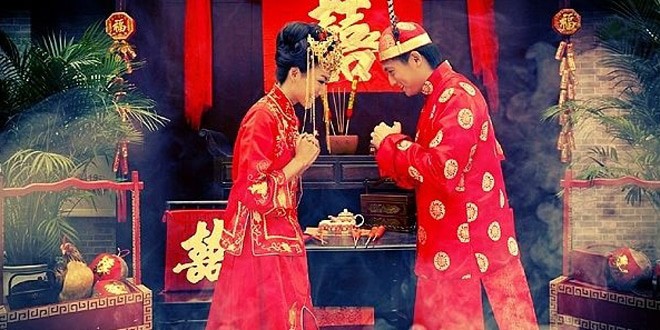It will only take [est_time] to read this post!
When I began planning for my own wedding, I became curious about traditional Chinese weddings and how different they are in the modern day.
In preparation for my own wedding, Nora and I went to a bridal ‘convention’ at the Shenzhen exhibition centre, it was full of fluffy, bejewelled dresses that were definitely not my cup of tea and some of which were VERY expensive. Having recently learned about the history of the ‘white wedding’ via one of my fave podcasts, I was curious as to whether all modern brides in China cast off the traditions of red qipaos in favour of meringues and loo roll covers from the 70s…
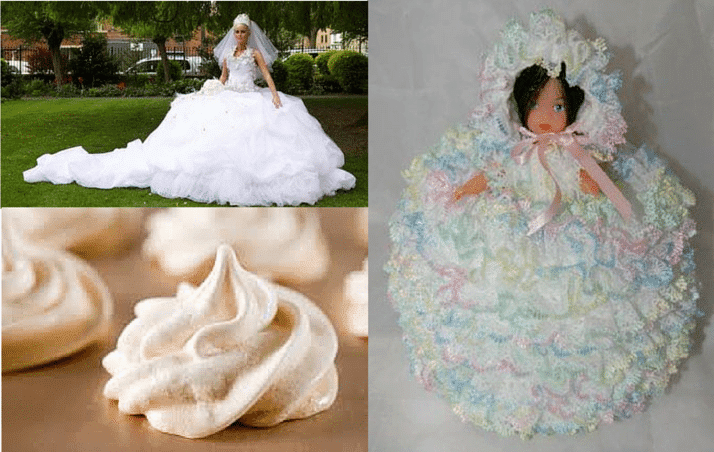
Although my interest stemmed from the dress (obviously), I’ve learned a lot about the traditional Chinese wedding ceremony, which in some ways are very similar to the ones that I am familiar with in the UK. One thing I would definitely like to point out is that wedding traditions in China vary dramatically depending on region and province. There are some ‘common’ traditions that many wedding ceremonies would have followed, and those are the ones I will focus on in the following article.
The Traditional Chinese Wedding Ceremony
In ancient China, a good marrying age was around 20 years old for men and 16 years for girls. Their match rarely had anything to do with love, but was made to connect two good families or to improve their status by connection.
There are said to have been ‘three letters and six etiquettes’ that had to be followed in order for the couple to be married. These rules were devised by prince, Zhou Gong 周公 (zhōu gōng) whose father, Zhou Wu Wang 周文王 (zhōu wén wáng), ruled between 1099-1056 B.C.
The Three Letters & The Six Etiquettes 三书六礼 (sān shū liù lǐ)
The three letters consisted of the following:
The Betrothal Letter 聘书 (pìn shū), which was a contract between the two families; The Gift Letter 礼书 (lǐ shū), a list of gifts that came with the bride’s dowry 嫁妆 (jià zhuāng) and finally the Wedding Letter 迎亲书 (yíng qīn shū), welcoming the bride into her new husband’s home.
The six etiquettes were the following: the proposal 纳采 (nà cǎi), find the bride’s name and birthday 问名 (wèn míng), visit the fortune teller 纳吉 (nà jí), prepare and send wedding gifts 纳征 (nà zhēng), choosing a ceremony date 请期 (qǐng qī) and the big day 亲迎 (qīn yíng).
1.The Proposal
It was the man’s family who would find a girl worthy of their family. All proposals had to be done with the aid of a matchmaker 媒人 (méi ren), who would go with the man’s parents to ask the girl’s family permission. If both families agreed, the matchmaker was given gifts to show gratitude and to ensure the happiness of their children. In some cases, the prospective bride and groom would not meet until their wedding day.
2 & 3. Name and Birthday Matching
Once the proposal was accepted, the matchmaker go to the bride’s home to find out her name and birthday, even down to the minute that she was born. Sometimes they would also get a description of the appearance and health of the bride.
The matchmaker would then take the bride and groom’s names and birthdays to a fortune teller to make sure they were a good match for each other. This part of the ritual was called 合八字 (hé bā zì). The Chinese zodiac would have almost certainly been the basis for their match, and is sometimes still used today for matchmaking.
4. Gift Giving
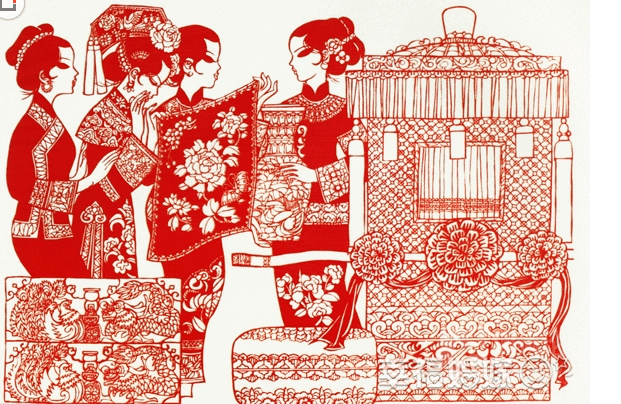
Once their match has been confirmed, the groom’s parents would send betrothal gifts to the girl’s family. These gifts would usually be items such as gold, jewelry, wine, tea, and foods with good symbolism. Amongst the gift would be a silver coin engraved with the character 求 (qiú) , meaning ‘proposal’. The parent’s of the bride would send back another coin bearing, 允 (yǔn) meaning ‘agreed’. Giving wedding gifts was one of the most important ‘etiquettes’ of the six, and it was meant to show respect towards the bride and her family.
5. Choosing the Wedding Date
The matchmaker would return to the fortune teller to decide the date of the ceremony. The actually wedding ceremony might take place after many years of engagement. The day of the wedding would usually be favourable to the couple’s happiness and prosperity, this is also known as 良辰吉日 (liáng chén jí rì) .
Once the wedding date had been fixed, the groom’s family would request the bride’s parents to send her dowry in order to decorate the bridal chamber. The wedding could not commence until the chamber had been decorated. The quality of the woman’s dowry would affect the status and treatment she would receive from her husband’s family.
In ancient China, the dowry would be jewellry made of gold and jade. Later on, the dowry was often made up of domestic items to set up a home such as tables, chairs, basins and cabinets. However, the dowry was sometimes made up of symbolic objects such as scissors, to symbolize that the couple would never be separated, a ruler, symbolizing 1000 acres of land, sugar, for a sweet marriage, and shoes to symbolize a long lasting marriage into old age. Quilts, pillows and clothes were also given as a symbol of fertility.
6. The Wedding Ceremony
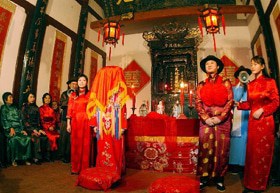
On the day of the wedding, the bride would dress in a red skirt and cover her head with a red handkerchief. Red symbolizes many things in ancient and modern day Chinese including love, honour and fertility. In ancient Chinese, before polygamy was banned, second wives would often wear pink instead of red, to show their relationship within her new family.
Before the bride left her parent’s home she would cry 哭嫁 (kū jià), to show her reluctance to leave her mother and to thank her parents for educating her. The groom would go to the bride’s house to collect her, but on the way, he would have to overcome several tricky scenarios to show he was worthy of seeing his bride. The bride would travel in a sedan from her family home to her new husband’s home and where the ceremony would take place.
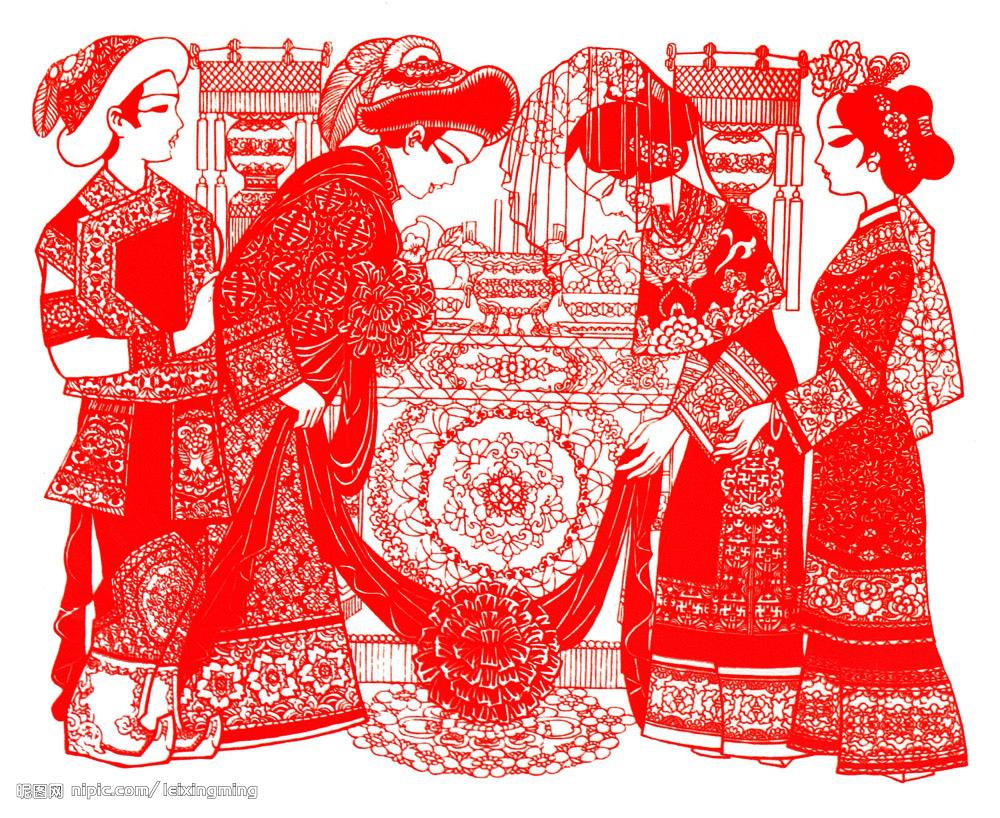
Once at the house, they would commence the bowing ritual. The groom, who would also be wearing red, would kowtow three times to the heavens, his parents and his new wife. There would be offerings of tea and red packets. Everyone who received gifts would get more than one during the ceremony, as single objects symbolized loneliness and was not conducive to a good marriage.
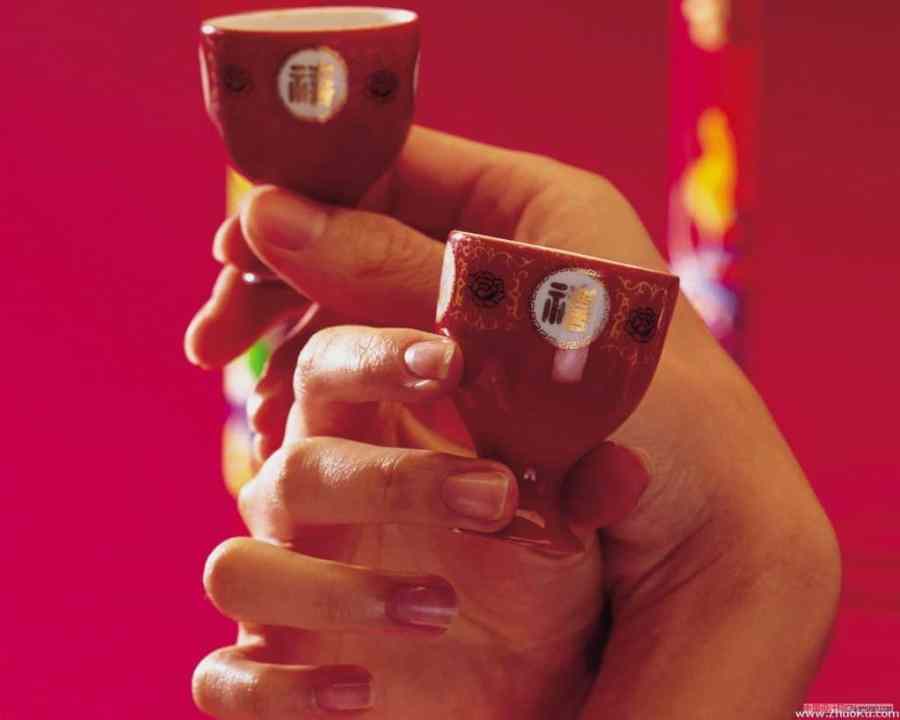
The newlyweds would then enter the bridal chamber, where they would drink from the nuptial cup 交杯酒 (jiāo bēi jiǔ) before consummating their marriage 圆房 (yuán fáng). The family members and friends would feast together till midnight. During this time, it was customary to commit mischievous acts, or Bridal Chamber Pranks 闹洞房 (nào dòng fáng), to make sure there were no evil spirits or bad luck to ruin the marriage.
After the wedding was over, there was several customs that had to be completed, such as the bride and groom visiting the bride’s family to give gifts and show respect. This was known as 回门 (huí mén) or 归宁 (guī níng).
The Modern Chinese Wedding Ceremony
The modern day wedding ceremony in China, is kind of a mashup of both a traditional Chinese wedding ceremony with some, what I would class as ‘western’ elements. These include things like wearing a white dress, having a wedding reception, drinking A LOT, and giving favours to the guests.
Before the Wedding Party
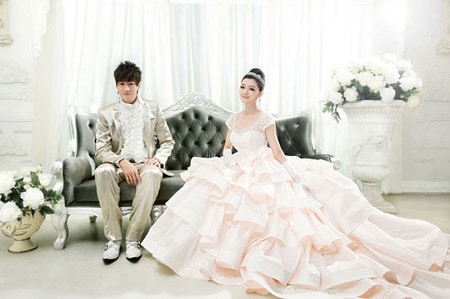
It is quite common for couples to have their wedding photos staged and taken well before their wedding party. Sometimes the couple will rent out their outfits so that they can have the most dramatic and impressive togs in their photos.
In modern day weddings, there is no formal ceremony on the wedding day. The couple will have already signed legal documents several months before hand. Their wedding is a day to eat, drink and get lots of red packets!
Similarly to the tradition in both China and the west, the bride would be picked up in decorated cars and taken to the wedding. Unlike the tradition in the west to not see the bride the day of the wedding, the bride and the groom will probably have already seen each other earlier in the day.
As in ancient Chinese custom, sometimes there will be some ‘pranks’ played by the bride’s female friends and family members who have to be ‘bribed’ to give their friend away.
Wedding Feast
A wedding feast consists of around 12 courses, sometimes including a course of shark fin soup (especially in Guangdong Province). When the soup is being served, the newly weds begin to toast with their guests, who present them with hong baos.
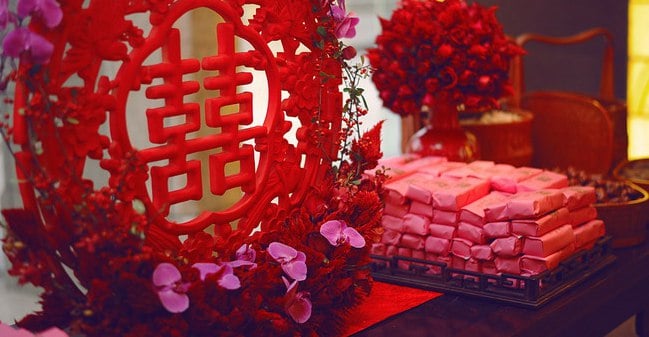
The wedding dinner will usually take place in a big restaurant and are decorated with red and gold banners featuring the 囍 (xǐ) character, symbolizing double joy. There would be bouquets of flowers around the restaurant, usually lilies or orchids.
Amazingly, the bride will sometimes change her outfit 3-4 times during the course of the day (that’s a lot of toilet rolls!). Although red is very symbolic in Chinese custom, modern day brides often have at least one white western style dress. At some point she may also wear a red qipao 旗袍 (qí páo) while the groom will wear a red, black or sometimes dark blue ceremonial outfit, called 中山装 (zhōng shān zhuāng).
When the dinner is over, the bride, groom and their families will line up to say goodbye to their guests. The couple will often give sweet ‘favours’ such as candy or chocolate to thank their guests for joining their wedding party.
Dowry Reversal
Although many families in modern day Chinese, do not expect a dowry to be paid by the bride’s family, there are some provinces who expect ‘payment’ for their daughters. This infographic, originally on Quartz, gives the ‘price’ expected to be paid by the man’s family in order for him to marry the girl.
Finally, I want to share with you some pictures of a Chinese man who recreated a traditional Chinese wedding for his American bride. I have to say, it looks like a lot of fun, and extremely memorable, I just hope they didn’t have to endure any bridal chamber pranks!
If you have any of your own Chinese wedding stories, please share them with us below!
Some of the references used in his article:
https://www.travelchinaguide.com/intro/social_customs/marriage
a href=”http://www.chinatravel.com/facts/weddings-in-china.htm >http://www.chinatravel.com/facts/weddings-in-china.htm/” target=”_blank”
http://www.chinahighlights.com/travelguide/culture/ancient-chinese-marriage-customs.htm
